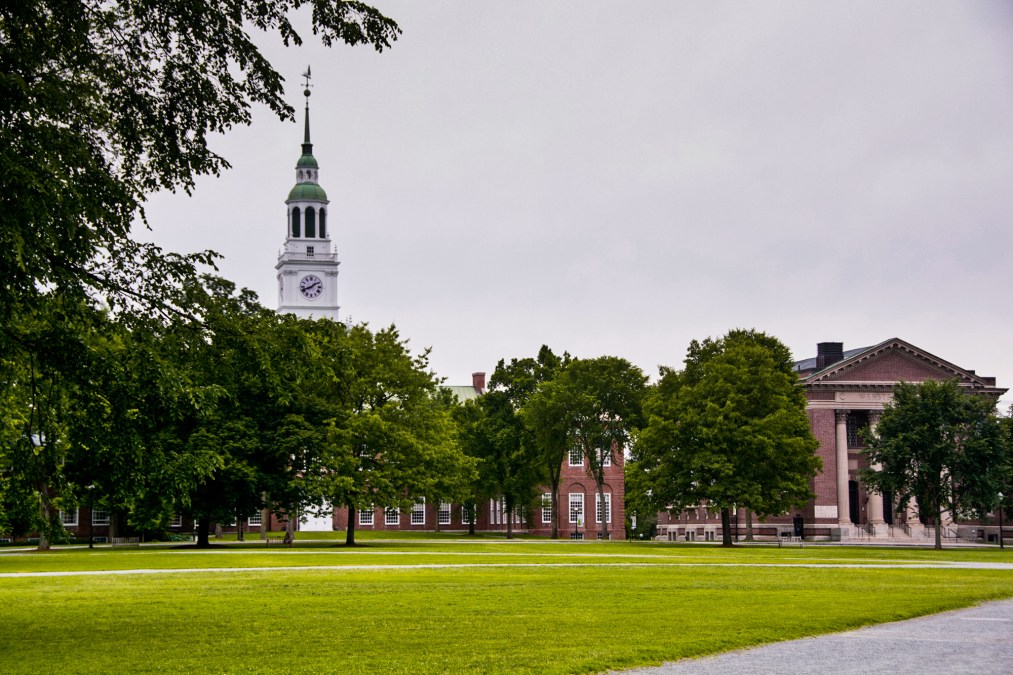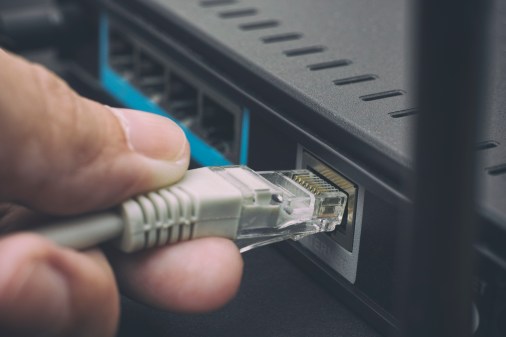How Dartmouth is transforming its on-campus Wi-Fi network

The technology found in the average university dorm room is more advanced than it was just a few years ago thanks to the ascent of internet-connected devices — and universities with legacy wireless infrastructures are looking to keep up. Through “controllerless” architecture and location-based bluetooth services, Dartmouth College is turning its wireless infrastructure into more than just an internet connection.
Last spring, the 6,500-student New Hampshire university began planning out its new wireless infrastructure with Mist — a 5-year old networking startup that promises an “AI-driven” network. Felix Windt, network engineering team lead for Dartmouth told StateScoop the technology’s machine learning capabilities and virtual “Bluetooth Low Energy,” or BLE, beacons intrigued the school, which had an “aging” wireless network before the upgrade.
“It’s in need of an update,” Windt said.
Dartmouth has launched the new network in four buildings on campus so far, with plans to expand that to 1,000 total access points and the eventual rest of the campus later this year. A “controllerless” network virtualizes the duties that a physical wireless controller has: communicating with each access point, ensuring VPN connectivity, spectrum analysis and security.
The “artificial intelligence” portion of the network comes into play each time an event occurs on the network that might require remediation, like if someone attempts to log on, but can’t. In those cases, Mist takes a snapshot of the network’s current status and logs the locations, devices and operating systems that experienced errors. That’s helped Windt’s team and the help desk triage errors “much faster,” he said.
That’s where the industry is headed, he said, and it places Dartmouth on the edge of wireless infrastructure.
Tied down
While controller-based networks are mature and stable, Windt said, they lock customers like Dartmouth into strict upgrade-and-patch schedules and protocols — a school that wants to upgrade the controller itself is forced also to upgrade every access point and hope there are no bugs. That’s not ideal for a dynamic university environment with hundreds of buildings and thousands of access points, he said.
“[When patching a controller-based network] the vendors just really have two options,” Windt said. “Either they release half-baked code that is going to introduce more bugs, or the [quality assurance] period takes so long that customers just have to wait forever. You also just can’t upgrade in the middle of a term or during summer exams or something like that — we’re tied to these school schedules.”
The general architecture was only one aspect of the service that drew Windt in. The other key ingredient — virtualized location-based BLE services — turns the network into more than just a consistent internet connection. BLE beacons are small, battery-powered devices that emit a bluetooth signals, within a 50-100 foot radius, that can transmit location-based messages such as weather alerts or the daily food court offerings.
While that’s valuable technology, Windt said, placing thousands of battery-powered beacons across campus is time-consuming and a potential logistical nightmare. But with virtualization, Windt said he’s just beginning to realize the scope of possibilities the technology offers.
“We think that’s going to play a part in a lot of the projects we’re going to do moving forward that our community actually gets added value out of instead of just, ‘Hey, this is a stable wireless network,’” Windt said.
New possibilities
Windt’s team continues to search for new use cases for the network, but so far he said the most valuable result of the upgrade has been through sharing what it can do with the rest of the school.
“It became clear that we should just offer this capability and see what other people do with it,” Windt said. “The moment we started having conversations with other groups around campus, they started having ideas for uses that had never occurred to us.”
Professors and other campus officials jumped in, he said, and they had lots of little suggestions like using the beacons to take attendance or track how long a person was in a room.
Campus life officials suggested using the technology to quantify how popular certain common rooms are. The tool can measure how long students spend in a given lounge before and after a renovation.
“Now, you can just run a project in a dorm or two before you spend millions of dollars on implementing this throughout your entire residential infrastructure,” Windt said.
Other ideas, like designing an app for students to submit work orders to facilities staff through the location-based service, the university plans to develop. The network’s future has presented some questions, though. For one, Windt isn’t sure how much to open up the network to the Dartmouth community.
“Do we want to give RAs the ability to notify any student that walks into the dorm that they live in without having to go file a ticket somewhere? Or just to have an interface to do that with?” Windt said. “Or for, I don’t know, the chess club announcing to anybody walking by the room that they usually meet in, just for that hour, that today they’re on the second floor.”


